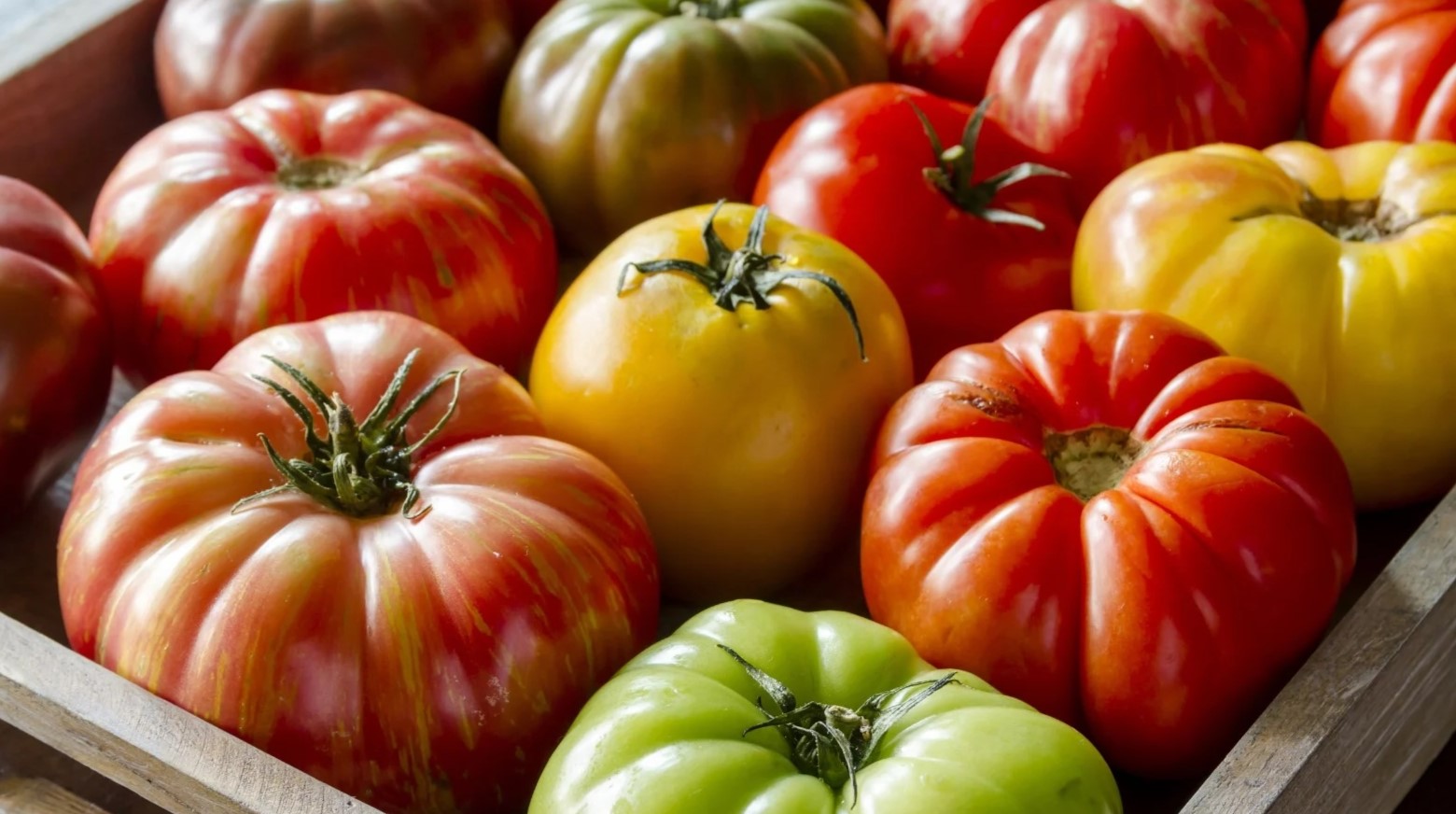
Heirloom tomatoes are more than just a tasty addition to your salad; they carry a rich history and unique characteristics. Have you ever wondered what makes these tomatoes so special? Heirloom tomatoes are open-pollinated, meaning they rely on natural pollination from insects, birds, or wind. This natural process helps preserve their genetic diversity. Unlike hybrid tomatoes, heirlooms come in various shapes, sizes, and colors, offering a visual feast. They also boast a range of flavors, from sweet to tangy. Heirloom tomatoes often have intriguing names like Brandywine, Cherokee Purple, and Green Zebra, each with its own story. Curious about growing them? They thrive in well-drained soil and require plenty of sunlight. Ready to learn more? Dive into these 30 fascinating facts about heirloom tomatoes!
Key Takeaways:
- Heirloom tomatoes are special, open-pollinated varieties with rich flavors and vibrant colors. They offer unique culinary uses and benefits, making them a favorite among chefs and food enthusiasts.
- Growing heirloom tomatoes requires special care, including full sun, well-drained soil, and regular monitoring for pests and diseases. They offer more nutrition and genetic diversity, making them a rewarding choice for gardeners.
What Are Heirloom Tomatoes?
Heirloom tomatoes are a special variety of tomatoes known for their rich flavors, vibrant colors, and unique shapes. Unlike hybrid tomatoes, heirlooms are open-pollinated, meaning they are pollinated naturally by insects, birds, or the wind.
- Heirloom tomatoes are often passed down through generations, preserving their unique characteristics.
- They come in a variety of colors, including red, yellow, green, purple, and even striped.
- These tomatoes are known for their rich, complex flavors, often described as sweet, tangy, or smoky.
- Heirloom tomatoes can be traced back at least 50 years, making them a piece of living history.
- They are typically grown from seeds saved from the previous year's harvest.
Types of Heirloom Tomatoes
There are many different types of heirloom tomatoes, each with its own unique flavor, color, and shape. Here are some popular varieties.
- Brandywine tomatoes are large, pink, and known for their sweet, juicy flavor.
- Cherokee Purple tomatoes have a deep, dusky purple color and a rich, smoky taste.
- Green Zebra tomatoes are small, green, and striped, with a tangy, citrus-like flavor.
- Black Krim tomatoes are dark red to black and have a slightly salty, savory taste.
- Yellow Pear tomatoes are small, yellow, and pear-shaped, with a mild, sweet flavor.
Growing Heirloom Tomatoes
Growing heirloom tomatoes can be a rewarding experience, but it requires some special care and attention.
- Heirloom tomatoes need full sun, at least 6-8 hours a day, to thrive.
- They prefer well-drained soil rich in organic matter.
- Regular watering is essential, but avoid getting the leaves wet to prevent disease.
- Heirloom tomatoes are more susceptible to pests and diseases than hybrids, so regular monitoring is important.
- Staking or caging the plants can help support their weight and keep the fruit off the ground.
Benefits of Heirloom Tomatoes
Heirloom tomatoes offer several benefits beyond their delicious taste and beautiful appearance.
- They are often more nutritious than hybrid tomatoes, with higher levels of vitamins and antioxidants.
- Growing heirloom tomatoes helps preserve genetic diversity in our food supply.
- Many people find heirloom tomatoes easier to digest than hybrids.
- They can be grown organically, without the need for synthetic pesticides or fertilizers.
- Heirloom tomatoes often have a longer growing season, providing fresh tomatoes for a longer period.
Culinary Uses of Heirloom Tomatoes
Heirloom tomatoes are incredibly versatile in the kitchen and can be used in a variety of dishes.
- They are perfect for fresh salads, adding vibrant color and flavor.
- Heirloom tomatoes make excellent sauces, with their rich, complex flavors.
- They can be roasted or grilled to bring out their natural sweetness.
- Sliced heirloom tomatoes are a delicious addition to sandwiches and burgers.
- They can be used to make homemade salsa, adding a unique twist to traditional recipes.
Fun Facts About Heirloom Tomatoes
Here are some interesting tidbits about heirloom tomatoes that you might not know.
- The term "heirloom" was first used to describe these tomatoes in the 1940s.
- Some heirloom tomato seeds have been passed down for over 100 years.
- Heirloom tomatoes can be found in a variety of shapes, including round, oblong, and even heart-shaped.
- They are often more expensive than hybrid tomatoes due to their unique qualities and the care required to grow them.
- Heirloom tomatoes are a favorite among chefs and food enthusiasts for their exceptional flavor and appearance.
The Final Bite
Heirloom tomatoes aren't just tasty; they're packed with history, flavor, and nutrition. From their vibrant colors to their unique shapes, these tomatoes offer a feast for the eyes and the palate. They come in many varieties, each with its own story and taste profile. Growing them might take a bit more effort, but the reward is worth it. You get to enjoy tomatoes that are free from genetic modification and bursting with flavor.
Whether you're a seasoned gardener or just starting out, heirloom tomatoes can add a special touch to your garden and meals. They connect us to the past while offering a delicious experience in the present. So next time you're at the market or planning your garden, consider adding some heirloom tomatoes to your list. Your taste buds will thank you!
Frequently Asked Questions
Was this page helpful?
Our commitment to delivering trustworthy and engaging content is at the heart of what we do. Each fact on our site is contributed by real users like you, bringing a wealth of diverse insights and information. To ensure the highest standards of accuracy and reliability, our dedicated editors meticulously review each submission. This process guarantees that the facts we share are not only fascinating but also credible. Trust in our commitment to quality and authenticity as you explore and learn with us.


